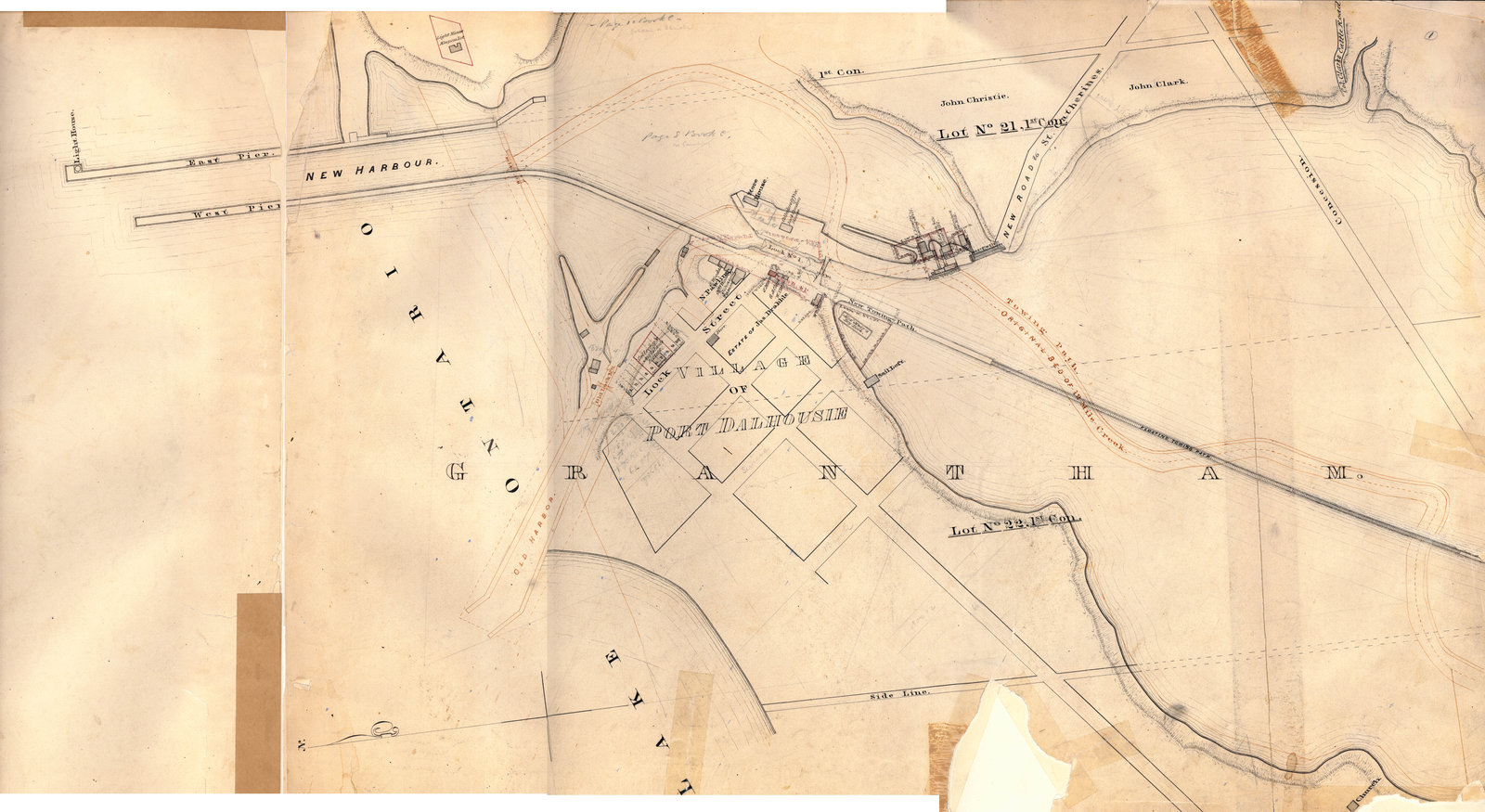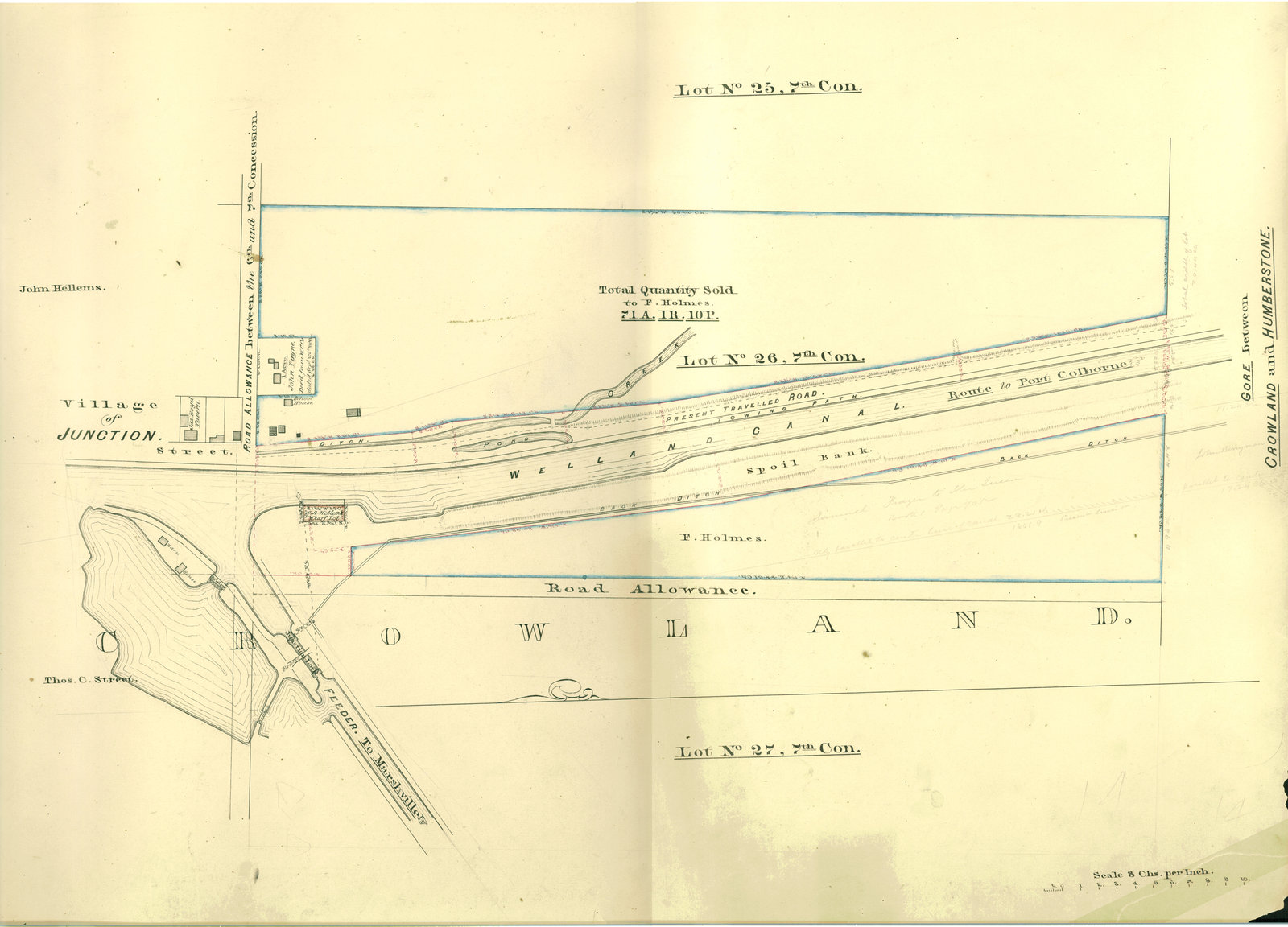Welland Canal Survey Maps
Land surveys of the first and second Welland Canals
Contents: About the Collection | About the About Page | Tech
The Welland Canal
The first Welland Canal opened in 1829. William Hamilton Merritt is well known for being the driving force behind its development. Merritt owned and operated mills on Twelve Mile Creek and first proposed a canal in 1818. The need for water to power these mills is likely what gave Merritt the idea of constructing a feeder canal to connect the Welland River and Twelve Mile Creek. This plan quickly evolved into a much larger project to connect Lake Ontario and Lake Erie. This would provide a link in the St. Lawrence Seaway transportation system that would allow goods from western Upper Canada to be shipped to Montreal and Great Britain while bypassing the Niagara Falls portage.
The canal was to run from Lake Ontario up the Twelve Mile Creek. From there, it would consist of two branches, one to the Welland River and another branch to the Grand River. Construction was proceeding smoothly until November 1828, when the excavation at the Deep Cut to the Welland River collapsed. The Deep Cut was a stretch of land between Allanburg and Port Robinson that required significant excavation in order for the canal to be created. This section of land contained a ridge 20 metres high.
After the collapse at the Deep Cut, it became clear that it would not be possible to use the Welland River for water for the canal, and a plan was devised to turn the secondary canal to the Grand River into a Feeder canal for the main branch. This led to the development of several communities along the Feeder Canal including Dunnville, Marshville (Milton), Welland (Merrittville), and Junction, near where the Feeder Canal joined the main canal.
Construction continued and two schooners, one British and one American, passed through the new canal from Lake Ontario to Buffalo on November 30, 1829. There was much work still to be done to complete the canal, which was not finished until 1834. The initial canal ran south from Port Dalhousie along Twelve Mile Creek to St. Catharines and the Welland River. An extension was built in 1833 to Gravelly Bay, now Port Colborne.
As ships became larger and the wooden locks deteriorated, the need for a new canal became apparent. In 1841, the government approved the purchase of the Welland Canal Company’s assets and began making plans for the construction of a second canal. Construction to enlarge the Feeder Canal and make a connection to Port Maitland began in 1841 and was completed by 1845. The canal mostly followed the same route as the first Welland Canal, although the wooden locks were replaced by locks made of cut stone. The total number of locks was also reduced from 40 to 27.
The section of the canal between the Feeder Junction and Port Colborne was also enlarged and opened for navigation in 1850. During this reconstruction, the Feedeer canal route was the only one available for shipping. As the canal became increasingly congested with larger ships, a Commission was appointed in 1870 to recommend improvements. A third canal was completed in 1887, but the second canal remained in use for power purposes until about 1915. Work on a fourth canal began around this time but was not completed until 1932. The fourth canal is known as the Welland Ship Canal and remains in operation.
The maps in this collection are taken from books of survey maps of the second Welland canal (1826-1860s) and a book of lands appropriated to the use of the Welland Canal Company (1826-1837). They are part of the Welland Canal/St. Lawrence Seaway Authority fonds, RG 422, Brock University Archives.
Technical Credits - CollectionBuilder
This digital collection is built with CollectionBuilder, an open source tool for creating digital collection and exhibit websites that is developed by faculty librarians at the University of Idaho Library following the Lib-STATIC methodology.
This site is built using CollectionBuilder-gh which utilizes the static website generator Jekyll and GitHub Pages to build and host digital collections and exhibits.




